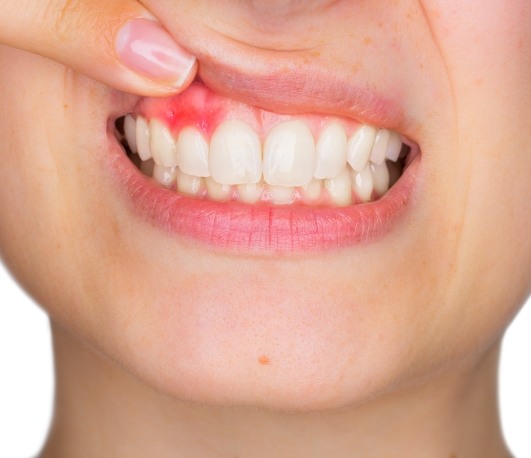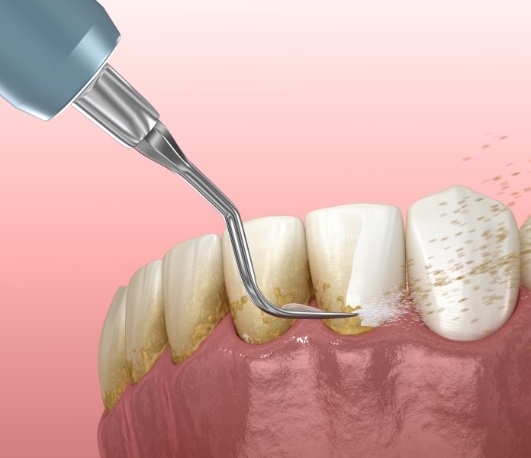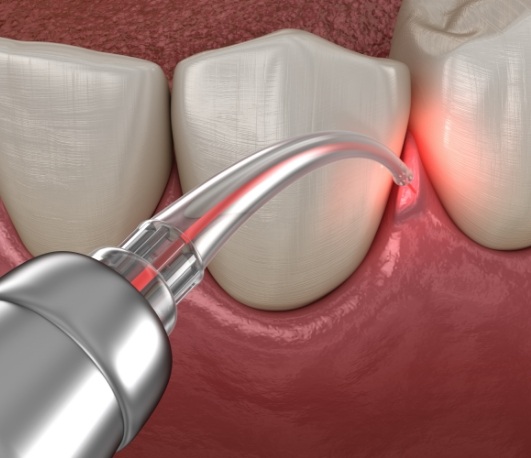Gum Disease Treatment Waco
Better Gum Health Can Be a Reality
Many people think of their teeth when they hear the phrase “oral health.” However, the gums play as big of a role as your tooth enamel does. Without healthy gums, your teeth have no foundation to stand on. In fact, gum health can directly affect your bone tissue, so it’s incredibly important to maintain consistent at-home oral care and dental visits. With that said, if you do develop gum disease, Dr. Lassetter and her team can provide comprehensive gum disease treatment in Waco, so call us today.
Why Choose Heart of Texas Smiles General & Cosmetic Dentistry for Gum Disease Treatment?
- Laser Periodontal Treatment for More Comfortable Approach
- We Are Focused on Providing Complete Patient Education
- State-of-the-Art Dental Practice Built in 2021
What Is Gum Disease?

Gum disease is an infection of the gum tissue. When plaque builds up on the surface of teeth, it releases acids that harm your oral structures. This results in not just the erosion of tooth enamel, but also the breakdown and irritation of your gum tissue. Without treatment, this damage can become permanent, so it’s extremely important to get it treated as soon as you notice the symptoms. Keep in mind that gum disease is the leading cause of tooth loss in adults.
What Are the Symptoms of Gum Disease?

If your gums have ever felt tender or sensitive, it could be due to unremoved plaque releasing acids and irritating them. If you’ve ever noticed your gums bleeding while brushing, flossing, or eating your favorite foods, it’s a sign that advanced gum disease has developed. If your gums are in chronic pain or you notice that you have bad breath that doesn’t go away, even after brushing and flossing, it’s because a large amount of plaque and bacteria has reached areas below the gumline.
How Can You Prevent Gum Disease?

The best way to prevent gum disease is to maintain routine brushing and flossing at home as well as biannual dental exams and teeth cleanings at our office. This gives us a chance to confirm that your at-home care is sufficient as well as catch and treat the early signs of gum disease before it reaches the advanced stages. Preventive care is always easier to perform, and routine visits play a major role in avoiding gum disease.
Scaling & Root Planing

If we determine that you have periodontal disease, our first course of treatment will involve scaling and root planing, which you can think of as a dental cleaning that’s specifically focused on the gums and roots of the teeth. For the scaling portion, an ultrasonic cleaner will be used to remove harmful plaque and bacteria buildup from around the gumline, and then the roots of the teeth will be gently smoothed out (root planing). This makes plaque less likely to gather near the gums in the future, protecting you from reinfection.
Learn More About Scaling & Root Planing
Laser Treatment

When treating infected gum tissues, we can employ our Fotona Lightwalker laser, which creates a more comfortable and precise method of treatment. By targeting the bacteria surrounding teeth and the gumline, we can stop the spread of infection before it has the chance to enter the bloodstream or further damage additional tissues and/or bone. Better yet, all healthy gum tissues will remain untouched!
I Need a Checkup & Cleaning I Need a Dentist for My Child I Have a Cavity or Broken Tooth I am Missing One or More Teeth I Want to Enhance My Smile I Want a Straighter Smile I am Scared of the Dentist I Have Jaw Pain I'm Having Trouble Sleeping I Have a Dental Emergency View Our Services

